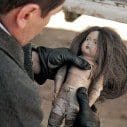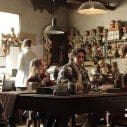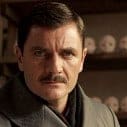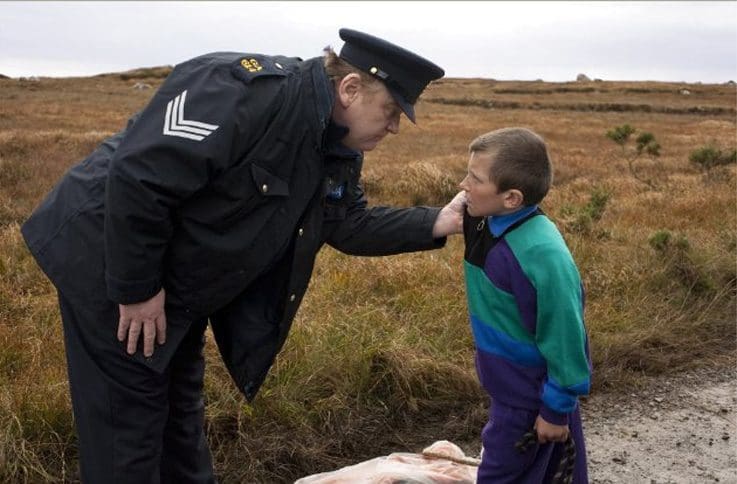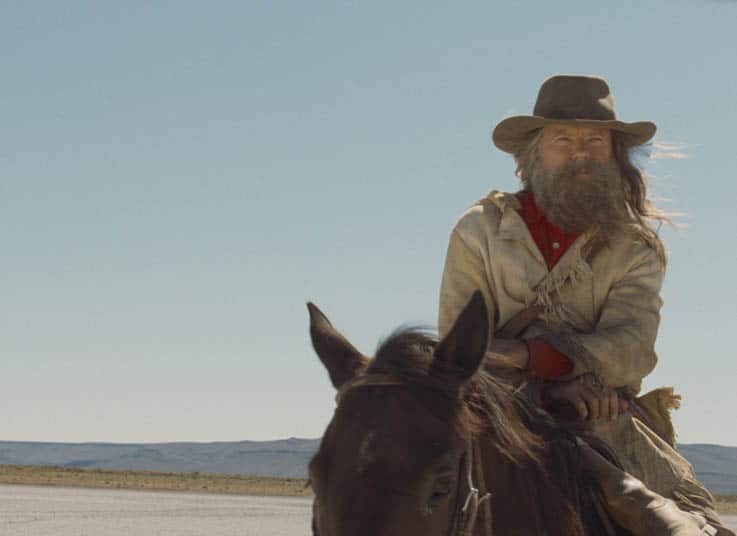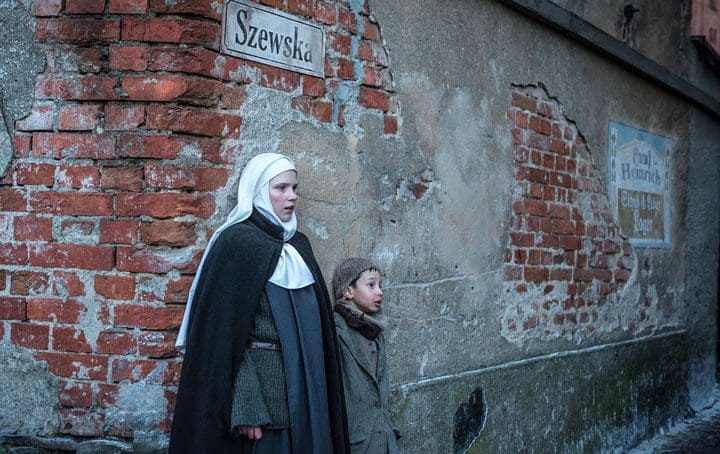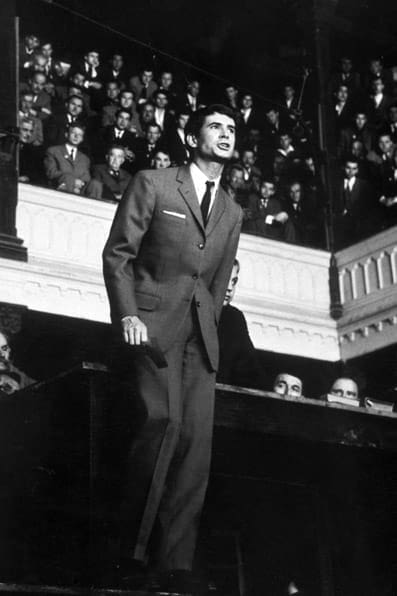History is no stranger to cinema, the latter seeming to view the past as a source of rich narrative content there to be mined and decorate the cinema and television screen.
Author and filmmaker Lucia Puenzo immerses herself in the past of one of her stories once again by adapting her 2001 novel Wakolda that takes as its inspiration one of the darkest and most mysterious chapters in Argentine modern history, where the notorious Nazi War Criminal Josef Mengele during his exile in South America makes a young girl the subject of one of his experiments.
In discussion of her third directorial feature with FLUX, Puenzo shared with us how the adaptation of her novel Wakolda was not originally intended to be her third film, and how an adaptation by nature can stray from its original source material. She also spoke of the research into the Nazi presence in South America and a complicated and complicit history that still haunts her country, whilst touching upon merging fiction and history and crafting her tale of this dark and mysterious chapter of the past.
Wakolda is an adaptation of your 2011 novel of the same name. What was the germ of the idea to adapt Wakolda?
“When I first wrote the novel Wakolda I was interested in the voice of the little girl who became fascinated with a German doctor, and whose true identity she slowly discovered. The novel was written over a year and a half, during which time I was also in the process of writing a script that was intended to be my third film. But it was not Wakolda, although slowly I began to realize that the film I wanted to make was Wakolda and not this other film. So I began to work on the adaptation, the script of which actually deviated considerably from the novel.”
How does the film compare and contrast to the source material?
“In the novel, even if it’s not the voice of Mengele, his character still sees the world as if it were a very big zoo – a laboratory. In the film, the point of view became focused on the girls perspective, and it is through her eyes that we see everything: the relationship with the German doctor, the trip to the end of Argentina, and the German community in Bariloche, which was very closed off and pro-Nazi at that time, even before the war. Through her point of view we see how she began to understand where she is, and who these people are.”
Was the Nazi presence in South America a significant part of your research?
“The stories of Nazis in South America could tally a hundred books and a hundred films. So many Nazi generals of all different hierarchies disappeared in our country, and in several other Latin America countries. But I was especially interested in their obsession with genetics, and creating the perfect race. It is almost a paradox that Mengele, who was so obsessed with racial purity should have ended up in a continent (not only in Argentina, he spent year in Paraguay and in Brazil), where we all have mixed blood.”
From the extensive research you’ve undertaken, how conscious was the Argentinian population of the Nazi war crimes, and to what extent were they consciously complicit in allowing Nazi’s to make Argentina a safe haven?
“By 1959, everybody was beginning to become aware of what had happened during the Second World War. But it was not necessarily the case that everyone knew about the role the German doctors played, and of the details of events at the deportation camps. This was something that began to be discovered with the trials a bit later on.
But the German community of Bariloche was well prepared to receive the Germans arriving from abroad who needed a new passport, a new identity quickly, as well as a new job. There were networks in place to do this, and to allow these men to evaporate. Of course, there was a lot of Argentinians who were not Germans, and who knew who these men were.
The school the kids attend in the film was a real and openly Nazi school before the war. After the war they began to hide all the references of Nazism, and Erich Priebke who was the director of the school lived in Bariloche for decades. When he was discovered and extradited, some of the citizens of Bariloche said that he was “such a nice little old man”. So there were a lot of chains of complicity.”
How challenging was it to combine fiction and historical truth?
“Both the novel and the film work with a combination of real historical facts and a degree of fiction, though it is true that Mengele lived in Argentina for four or five years. He even had his name in the phonebook; he had a pharmaceutical company, and he moved around our country with complete impunity.
At some point, when Eichmann was captured by the Mossad, Mengele disappeared and reappeared in Paraguay six months later, and the film is set in those six months where his tracks were lost. Some people say he was in Bariloche at some point, but the family with whom he lives is part of fiction, though they could have been real.
Nora Eldoc, the Israeli spy, is a true life character based on a woman who was found murdered a few days after Mengele was supposed to have left Bariloche. Some say she was a voluntary of the Mossad. There were hundreds of them in Latin America. Others say she was there for a ski week, and that her death was an accident. But people from the Israeli embassy came to look for her body, took some documentation away and archived the episode.”
Lilith is her parents’ little girl, and it seems that nobody but Mengele has seen her growing. It is as if Lilith needs this man and in particular his way of looking at her.
“Children and teenagers are sometimes in contact with darker sides of the human personality, and they are able to cross the line to these certain aspects that they don’t know so much about. Lilith is discovering some aspects that maybe she doesn´t yet know about herself, and she’s growing up through the way Mengele looks at her or the men look at her. But at the same time she’s beginning to have a political conscience; it’s not only the sexual aspect. So she’s beginning to understand certain other aspects of politics and ideology that are going on in her school, in her house and all around her.”
Between Lilith’s father who aims at reproducing the mechanism of the human body with his dolls, and Mengele, who is observing, taking notes and making experiments on the family, display two different aspects of science?
“When I first began to write the novel, the only thing I knew was that the heart of it would be the theme of “mixed” race or “pure” race, and this was the same for the film.
In the novel, there are two dolls. The first is the Mapuche doll called Wakolda, almost an alter ego of Lilith: mixed race, imperfect, magnetic and enchanted. Mapuches – our Indians from Patagonia – were wise people, with many esoteric beliefs. The other doll is Herlitzka, the Aryan doll that Mengele intends to create in series: a perfect doll. What Lilith’s father makes are very small sized, imperfect dolls. 1960 in Argentina was the beginning of industrialization, the jump from handcrafted work to factories. Before that, children sent their broken toys to what was known as Doll hospitals where broken toys were not thrown away but fixed or cured. That´s what Lilith´s father does: he fixes broken dolls and makes new handcrafted ones.
In the film Mengele´s diaries also became important, and they´re based on something I read in many history books: he used to travel with them and to have, even in the camps, many notebooks with drawings and precise (obsessive) information of everything he did. We even tracked some of these notebooks. The drawings were so childish that it was impossible to use, it was so dense. So we forced to create new notebooks for the film which offered us a cinematographic way of showing how he saw the world as a zoo or a laboratory. This is another point of contact with XXY in which the girl used to make drawings of her body. Mengele saw the world through the details of bodies, and what he pretended to do with them.”
How do you perceive the place Wakolda occupies within your body of work?
“Wakolda is very close to other films and stories I have told, and it has a lot of points of contact with XXY. You have the girl who sees the world and understands what is going on, and the doctor who wants to normalize Alex’s body in XXY has a lot in common with Mengele, who tries to make Lilith´s body grow to a standard height. I began to write both the novel and the script with the fascination of what some aspects of medicine is doing even today, in their constant intention to create perfect bodies. Of course, Nazism took this idea to it´s perfect and fanatic extreme: they crossed the line horribly, and in a very perverse way. When I began to write Wakolda, I met a lot of historians, but I also interviewed doctors, geneticists and endocrinologists. They kept telling me that the growth treatment Mengele experimented, the growth hormone he used – even though it was completely out of control and used in an extremely perverse way – is the same hormone used today for growth treatments. Even today ethical issues in many medical treatments are still a delicate subject.”
Interview with Director Lucia Puenzo by Nikki Scrafton. Introduction by Paul Risker
Wakolda is released in UK theatres 8 August courtesy of Peccadillo Pictures.



